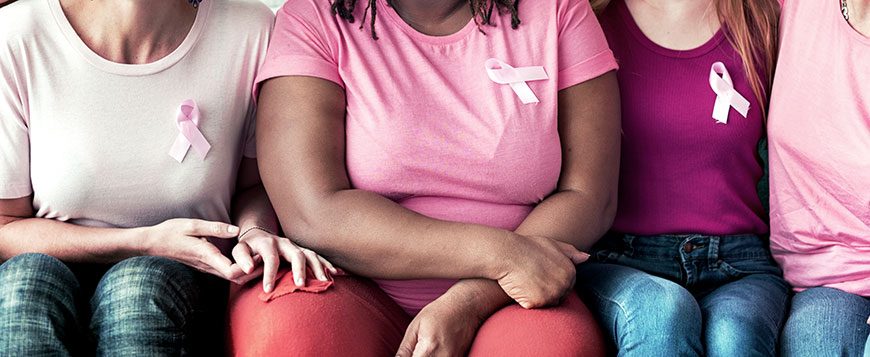Category
5 Proactive Ways to Reduce Your Risk of Breast Cancer

Awareness, Education, and Intervention
Approximately one in eight women in the United States will develop breast cancer in her lifetime. Although survival rates have been on the rise in the past 20 years, approximately 268,000 U.S. women were diagnosed in 2019—making it the most common cancer among women.
October is Breast Cancer Awareness Month and—like all cancers—education, awareness, and early intervention are key factors in the prevention and treatment of breast cancer. There are many things you can do to reduce your risk of developing breast cancer and increase your chances of detecting it early, including:
- Performing Breast Self-Exams: It’s recommended to conduct breast self-exams a week or two after your period, or to assign one day each month if you do not have a menstrual period. Many breasts naturally have some lumps, which is not necessarily a cause for alarm. As you familiarize yourself with your body, be on the lookout for unusual changes such as new lumps, puckering, dimpling, and thickening or hardening of skin.
- Scheduling Mammograms: A mammogram is a noninvasive breast exam that uses X-rays targeted at each breast and produces an image doctors can use to check for abnormal areas that could be indicative of cancer. According to the American Cancer Society, women aged 45–54 should get a mammogram once a year, and women over 55 should schedule one every two years. Over the past three decades, mammograms have played a pivotal role in the early identification of breast cancer and have reduced the mortality rate by 40 percent since 1990.
- Family History: While breast cancer isn’t exclusively hereditary, having a family history of breast cancer increases the risk of developing it. If you have a close female relative (sister, mother, daughter) whose had breast cancer your risk is doubled—the risk is approximately 5 times higher if you have two close relatives with breast cancer.
- Avoiding Risk Factors: Taking steps to avoid or reduce risk factors in daily life can also decrease a woman’s chance of developing breast cancer. Limiting alcohol intake, maintaining a healthy weight and diet, and engaging in moderate physical activity are all linked to reducing the risk of developing breast cancer.
- Supporting Research: A cure won’t be found overnight. Support breast cancer research to ensure that clinicians and researchers have access to cutting-edge technology and state-of-the-art facilities. Every donation—no matter how small—makes a difference toward discovering the cure for breast cancer.
As a National Cancer Institute (NCI)-designated cancer center—and one of the first 30 centers to be accredited by the National Accreditation Program of Breast Centers (NAPBC)—the Jefferson Breast Care Center offers a full-range of treatment to treat any breast health-related issues. By supporting research at Jefferson, you can play a pivotal role in finding a cure to all cancers.